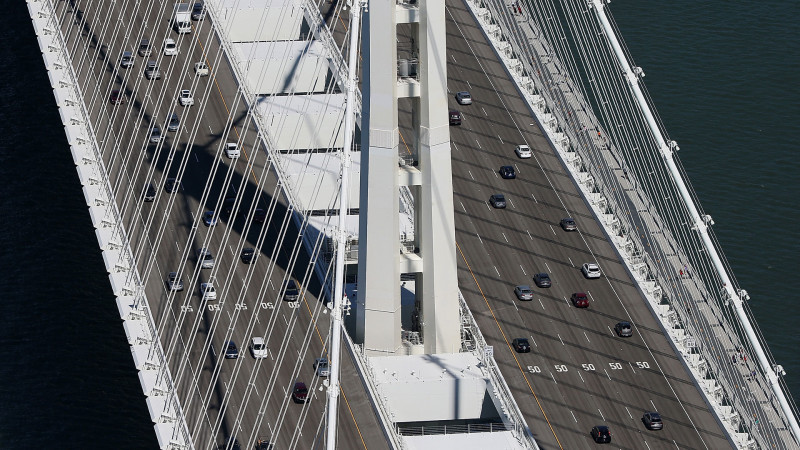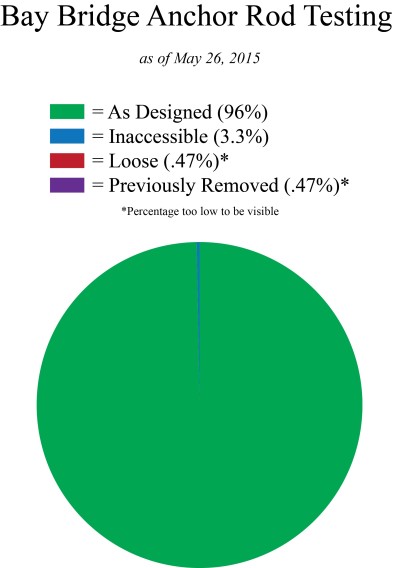So Caltrans is here with what it assures us is good news: More than 99 percent of the massive steel rods anchoring the tower on the new and forever-troubled eastern span of the Bay Bridge are intact, despite having been soaked in standing water for several years.
That's the result of several weeks of testing in which crews subjected more than 400 rods to a "pull test." Caltrans says the test involves "a powerful jacking device that grabs and yanks the rods with enormous force to verify integrity."
Why would Caltrans go to all that trouble on a bridge that's been open less than two years and is supposed to serve Bay Area travelers -- and withstand major earthquakes -- for the next 150 years?
Earlier inspections disclosed that all 424 rods in the tower foundation had been standing in water. That wasn't supposed to happen, and Caltrans has blamed contractors for improperly sealing the rods and leaving them unprotected. The agency is also still investigating the source of the water. It's possible that water from San Francisco Bay -- that would be extra-corrosive salt water -- is infiltrating the foundation and getting to the rods.
Caltrans has seen something like this on the bridge before. In early 2013, a set of steel rods identical to those in the tower foundation snapped when they were tensioned. Those rods were found to have been exposed to water for a long time and to have undergone chemical changes that made them brittle. Faced with a similar situation -- steel plus water plus tension -- Caltrans ordered its brutal-sounding pull test.


